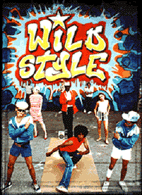 THE
EARLY DAYS OF HIP HOP THE
EARLY DAYS OF HIP HOP
Grandmaster
Flash: "When I laid this foundation down.. the key was we could
take almost anything musically just as long as it had a beat to it..
so that the rhymer who flowed over the top of it could syncopate..
For anybody to say that whatever they're doing in Florida is not hip
hop..or whatever they're saying in LA is not hip hop.. Who are these
people to say that?.. There were songs that Bambaataa played that
to this day I still don't know.. They were so funky.. Some of the
ones I got the priviledge to know..I was suprised...You take a song
like 'Apache' for example which was considered to be one of the hip
hop main themes..Those were a bunch of white guys. The Incredible
Bongo Rock Band were white guys.. There was one person there who was
Black.. He was King Erickson who was a percussionist...
For anybody to say 'this is not hip hop' or 'that is not hip hop'
is wrong. That is not the way the formula was laid down.. It was for
the people who were going to continue this to take anything...by all
means necessary and string it along..."
DJ Kool Herc: "Hip Hop.. the whole chemistry of that came from
Jamaica... I was born in jamaica and I was listening to American music
in Jamaica.. My favorite artist was James Brown. That's who inspired
me.. A lot of the records I played was by James Brown. When I came
over here I just put it in the American style and a perspective for
them to dance to it. In Jamaica all you needed was a drum and bass.
So what I did here was go right to the 'yoke'. I cut off all anticipation
and played the beats. I'd find out where the break in the record was
at and prolong it and people would love it. So I was giving them their
own taste and beat percussion-wise.. cause my music is all about heavy
bass..."
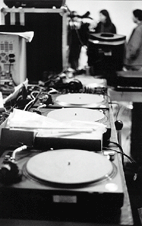 Rap
continues to be popular among today's urban youth for the same reasons
it was a draw in the early days: it is still an accessible form of
self expression capable of eliciting positive affirmation from one's
peers. Because rap has evolved to become such a big business, it has
given many the false illusion of being a quick escape from the harshness
of inner city life. There are many kids out there under the belief
that all they need to do is write a few 'fresh' (good) rhymes and
they're off to the good life. Rap
continues to be popular among today's urban youth for the same reasons
it was a draw in the early days: it is still an accessible form of
self expression capable of eliciting positive affirmation from one's
peers. Because rap has evolved to become such a big business, it has
given many the false illusion of being a quick escape from the harshness
of inner city life. There are many kids out there under the belief
that all they need to do is write a few 'fresh' (good) rhymes and
they're off to the good life.
Now, up to this point, all this needs to be understood with regards
to Hip Hop. Throughout history, music originating from America's Black
communities has always had an accompanying subculture reflective of
the political, social and economic conditions of the time. Rap is
no different.
Hip hop is the culture from which rap emerged. Initially it consisted
of four main elements; graffiti art, break dancing, dj (cuttin' and
scratching) and emceeing (rapping). Hip hop is a lifestyle with its
own language, style of dress, music and mind set that is continuously
evolving. Nowadays because break dancing and graffiti aren't as prominent
the words 'rap' and 'hip hop' have been used interchangeably. However
it should be noted that all aspects of hip hop culture still exists.
They've just evolved onto new levels.
Hip hop continues to be a direct response to an older generation's
rejection of the values and needs of young people. Initially all of
hip hop's major facets were forms of self expression. The driving
force behind all these activities was people's desire to be seen and
heard. Hip hop came about because of some major format changes that
took place within Black radio during the early 70's. Prior to hip
hop, black radio stations played an important role in the community
be being a musical and cultural preserver or griot (story teller).
It reflected the customs and values of the day in particular communities.
It set the tone and created the climate for which people governed
their lives as this was a primary source of information and enjoyment.
This was particularly true for young people. Interestingly enough,
the importance of Black radio and the role djs played within the African
American community has been the topic of numerous speeches from some
very prominent individuals.
For
example in August of '67, Martin Luther King Jr addressed the Association
of Television and Radio Broadcasters. Here he delivered an eloquent
speech in which he let it be known that Black radio djs played an intricate
part in helping keep the Civil Rights Movement alive. He noted that
while television and newspapers were popular and often times more effective
mediums, they rarely languaged themselves so that Black folks could
relate to them. He basically said Black folks were checking for the
radio as their primary source of information.
In August of 1980 Minister Farrakhon echoed those thoughts when he addressed
a body of Black radio djs and programmers at the Jack The Rapper Convention.
He warned them to be careful about what they let on the airwaves because
of its impact. He got deep and spoke about the radio stations being
instruments of mind control and how big companies were going out of
their way to hire 'undignified' 'foul' and 'dirty' djs who were no longer
being conveyers of good information to the community. To paraphrase
him, Farrakhon noted that there was a fear of a dignified djs coming
on the airwaves and spreading that dignity to the people he reached.
Hence the role radio was playing was beginning to shift...Black radio
djs were moving away from being the griots.. Black radio was no longer
languaging itself so that both a young and older generation could define
and hear themselves reflected in this medium.
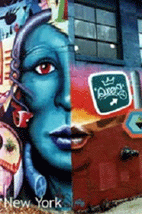 Author
Nelson George talks extensively about this in his book 'The Death Of
Rhythm And Blues'. He documented how NY's Black radio station began
to position themselves so they would appeal to a more affluent, older
and to a large degree, whiter audience. He pointed out how young people
found themselves being excluded especially when bubble gum and Europeanized
versions of disco music began to hit the air waves. To many, this style
of music lacked soul and to a large degree sounded too formulated and
mechanical. In a recent interview hip hop pioneer Afrika Bambaataa spoke
at length how NY began to lose its connection with funk music during
this that time. He noted that established rock acts doing generic sounding
disco tunes found a home on black radio. Acts like Rod Stewart and the
Rolling Stones were cited as examples. Meanwhile Black artists like
James Brown and George Clinton were for the most part unheard on the
airwaves. Even the gospel-like soulful disco as defined by the 'Philly
sound' found itself losing ground. While the stereotype depicted a lot
of long haired suburban white kids yelling the infamous slogan 'disco
sucks', there were large number of young inner city brothers and sisters
who were in perfect agreement. With all this happening a void was created
and hip hop filled it... Point blank, hip hop was a direct response
to the watered down, Europeanized, disco music that permeated the airwaves..
FYI around the same time hip hop was birthed, House music was evolving
among the brothers in Chicago, GoGo music was emerging among the brothers
in Washington DC and Black folks in California were getting deep into
the funk. If you ask me, it was all a repsonse to disco. Author
Nelson George talks extensively about this in his book 'The Death Of
Rhythm And Blues'. He documented how NY's Black radio station began
to position themselves so they would appeal to a more affluent, older
and to a large degree, whiter audience. He pointed out how young people
found themselves being excluded especially when bubble gum and Europeanized
versions of disco music began to hit the air waves. To many, this style
of music lacked soul and to a large degree sounded too formulated and
mechanical. In a recent interview hip hop pioneer Afrika Bambaataa spoke
at length how NY began to lose its connection with funk music during
this that time. He noted that established rock acts doing generic sounding
disco tunes found a home on black radio. Acts like Rod Stewart and the
Rolling Stones were cited as examples. Meanwhile Black artists like
James Brown and George Clinton were for the most part unheard on the
airwaves. Even the gospel-like soulful disco as defined by the 'Philly
sound' found itself losing ground. While the stereotype depicted a lot
of long haired suburban white kids yelling the infamous slogan 'disco
sucks', there were large number of young inner city brothers and sisters
who were in perfect agreement. With all this happening a void was created
and hip hop filled it... Point blank, hip hop was a direct response
to the watered down, Europeanized, disco music that permeated the airwaves..
FYI around the same time hip hop was birthed, House music was evolving
among the brothers in Chicago, GoGo music was emerging among the brothers
in Washington DC and Black folks in California were getting deep into
the funk. If you ask me, it was all a repsonse to disco.
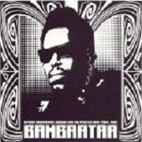 In
the early days of hip hop, there were break dance crews who went around
challenging each other. Many of these participants were former gang
members who found a new activity. Bambataa's Universal Zulu Nation was
one such group. As the scene grew, block parties became popular. It
was interesting to note that the music being played during these gigs
was stuff not being played on radio. Here James Brown, Sly & Family
Stone, Gil Scott Heron and even the Last Poets found a home. Hence a
younger generation began building off a musical tradition abandoned
by its elders. Break beats picked up in popularity as emcees sought
to rap longer at these parties. It wasn't long before rappers became
the ONLY vocal feature at these parties. A microphone and two turntables
was all one used in the beginning. With the exception of some break
dancers the overwhelming majority of attendees stood around the roped
off area and listened carefully to the emcee. A rapper sought to express
himself while executing keen lyrical agility. This was defined by one's
rhyme style, one's ability to rhyme on beat and the use of clever word
play and metaphors. In
the early days of hip hop, there were break dance crews who went around
challenging each other. Many of these participants were former gang
members who found a new activity. Bambataa's Universal Zulu Nation was
one such group. As the scene grew, block parties became popular. It
was interesting to note that the music being played during these gigs
was stuff not being played on radio. Here James Brown, Sly & Family
Stone, Gil Scott Heron and even the Last Poets found a home. Hence a
younger generation began building off a musical tradition abandoned
by its elders. Break beats picked up in popularity as emcees sought
to rap longer at these parties. It wasn't long before rappers became
the ONLY vocal feature at these parties. A microphone and two turntables
was all one used in the beginning. With the exception of some break
dancers the overwhelming majority of attendees stood around the roped
off area and listened carefully to the emcee. A rapper sought to express
himself while executing keen lyrical agility. This was defined by one's
rhyme style, one's ability to rhyme on beat and the use of clever word
play and metaphors.
In
the early days rappers flowed on the mic continously for hours at a
time..non stop. Most of the rhymes were pre-written but it was a cardinal
sin to recite off a piece of paper at a jam. The early rappers started
off just giving shout outs and chants and later incorporated small limricks.
Later the rhymes became more elaborate, with choruses like 'Yes Yes
Y'all, Or 'One Two Y'all To The Beat Y'all being used whenever an emcee
needed to gather his wind or think of new rhymes. Most emcess rhymed
on a four count as opposed to some of the complex patterns one hears
today. However, early rappers took great pains to accomplish the art
of showmanship. There was no grabbing of the crotch and pancing around
the stage. Pioneering rapper Mele-Mel in a recent interview pointed
out how he and other acts spent long hours reheasing both their rhymes
and routines. The name of the game was to get props for rockin' the
house. That meant being entertaining. Remember back in the late 70s
early 80s, artists weren't doing one or two songs and leaving, they
were on the mic all night long with folks just standing around watching.
Folks had to come with it or be forever dissed.
Before
the first rap records were put out (Fat Back Band's King Tem III' and
Sugar Hill Gang's 'Rapper Delight'), hip hop culture had gone through
several stages. By the late 70's it seemed like many facets of hip hop
would play itself out. Rap for so many people had lost its novelty.
For those who were considered the best of the bunch; Afrika Bambaataa,
Chief Rocker Busy Bee, Grandmaster Flash and the Furious Four (yes initially
there were only 4), Grand Wizard Theodore ad the Fantastic Romantic
Five, Funky Four Plus One More, Crash Crew, Master Don Committee to
name a few had reached a pinnacle and were looking for the next plateau.
Many of these groups had moved from the 'two turntables and a microphone
stage' of their career to what many would today consider hype routines.
For example all the aforementioned groups had routines where they harmonized.
At first folks would do rhymes to the tune of some popular song. The
tune to 'Gilligan's Island' was often used. Or as was the case with
he Cold Crush Brothers, the 'Cats In the Cradle' was used in one of
their more popular routines. As this 'flavor of the month' caught hold,
the groups began to develop more elaborate routines. Most notable was
GM Flash's' Flash Is to The Beat Box'. All this proceeded 'harmonizing/hip
hop acts like Bel Biv DeVoe by at least 10 years.
|
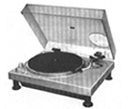

 THE
EARLY DAYS OF HIP HOP
THE
EARLY DAYS OF HIP HOP  Rap
continues to be popular among today's urban youth for the same reasons
it was a draw in the early days: it is still an accessible form of
self expression capable of eliciting positive affirmation from one's
peers. Because rap has evolved to become such a big business, it has
given many the false illusion of being a quick escape from the harshness
of inner city life. There are many kids out there under the belief
that all they need to do is write a few 'fresh' (good) rhymes and
they're off to the good life.
Rap
continues to be popular among today's urban youth for the same reasons
it was a draw in the early days: it is still an accessible form of
self expression capable of eliciting positive affirmation from one's
peers. Because rap has evolved to become such a big business, it has
given many the false illusion of being a quick escape from the harshness
of inner city life. There are many kids out there under the belief
that all they need to do is write a few 'fresh' (good) rhymes and
they're off to the good life. Author
Nelson George talks extensively about this in his book 'The Death Of
Rhythm And Blues'. He documented how NY's Black radio station began
to position themselves so they would appeal to a more affluent, older
and to a large degree, whiter audience. He pointed out how young people
found themselves being excluded especially when bubble gum and Europeanized
versions of disco music began to hit the air waves. To many, this style
of music lacked soul and to a large degree sounded too formulated and
mechanical. In a recent interview hip hop pioneer Afrika Bambaataa spoke
at length how NY began to lose its connection with funk music during
this that time. He noted that established rock acts doing generic sounding
disco tunes found a home on black radio. Acts like Rod Stewart and the
Rolling Stones were cited as examples. Meanwhile Black artists like
James Brown and George Clinton were for the most part unheard on the
airwaves. Even the gospel-like soulful disco as defined by the 'Philly
sound' found itself losing ground. While the stereotype depicted a lot
of long haired suburban white kids yelling the infamous slogan 'disco
sucks', there were large number of young inner city brothers and sisters
who were in perfect agreement. With all this happening a void was created
and hip hop filled it... Point blank, hip hop was a direct response
to the watered down, Europeanized, disco music that permeated the airwaves..
FYI around the same time hip hop was birthed, House music was evolving
among the brothers in Chicago, GoGo music was emerging among the brothers
in Washington DC and Black folks in California were getting deep into
the funk. If you ask me, it was all a repsonse to disco.
Author
Nelson George talks extensively about this in his book 'The Death Of
Rhythm And Blues'. He documented how NY's Black radio station began
to position themselves so they would appeal to a more affluent, older
and to a large degree, whiter audience. He pointed out how young people
found themselves being excluded especially when bubble gum and Europeanized
versions of disco music began to hit the air waves. To many, this style
of music lacked soul and to a large degree sounded too formulated and
mechanical. In a recent interview hip hop pioneer Afrika Bambaataa spoke
at length how NY began to lose its connection with funk music during
this that time. He noted that established rock acts doing generic sounding
disco tunes found a home on black radio. Acts like Rod Stewart and the
Rolling Stones were cited as examples. Meanwhile Black artists like
James Brown and George Clinton were for the most part unheard on the
airwaves. Even the gospel-like soulful disco as defined by the 'Philly
sound' found itself losing ground. While the stereotype depicted a lot
of long haired suburban white kids yelling the infamous slogan 'disco
sucks', there were large number of young inner city brothers and sisters
who were in perfect agreement. With all this happening a void was created
and hip hop filled it... Point blank, hip hop was a direct response
to the watered down, Europeanized, disco music that permeated the airwaves..
FYI around the same time hip hop was birthed, House music was evolving
among the brothers in Chicago, GoGo music was emerging among the brothers
in Washington DC and Black folks in California were getting deep into
the funk. If you ask me, it was all a repsonse to disco. In
the early days of hip hop, there were break dance crews who went around
challenging each other. Many of these participants were former gang
members who found a new activity. Bambataa's Universal Zulu Nation was
one such group. As the scene grew, block parties became popular. It
was interesting to note that the music being played during these gigs
was stuff not being played on radio. Here James Brown, Sly & Family
Stone, Gil Scott Heron and even the Last Poets found a home. Hence a
younger generation began building off a musical tradition abandoned
by its elders. Break beats picked up in popularity as emcees sought
to rap longer at these parties. It wasn't long before rappers became
the ONLY vocal feature at these parties. A microphone and two turntables
was all one used in the beginning. With the exception of some break
dancers the overwhelming majority of attendees stood around the roped
off area and listened carefully to the emcee. A rapper sought to express
himself while executing keen lyrical agility. This was defined by one's
rhyme style, one's ability to rhyme on beat and the use of clever word
play and metaphors.
In
the early days of hip hop, there were break dance crews who went around
challenging each other. Many of these participants were former gang
members who found a new activity. Bambataa's Universal Zulu Nation was
one such group. As the scene grew, block parties became popular. It
was interesting to note that the music being played during these gigs
was stuff not being played on radio. Here James Brown, Sly & Family
Stone, Gil Scott Heron and even the Last Poets found a home. Hence a
younger generation began building off a musical tradition abandoned
by its elders. Break beats picked up in popularity as emcees sought
to rap longer at these parties. It wasn't long before rappers became
the ONLY vocal feature at these parties. A microphone and two turntables
was all one used in the beginning. With the exception of some break
dancers the overwhelming majority of attendees stood around the roped
off area and listened carefully to the emcee. A rapper sought to express
himself while executing keen lyrical agility. This was defined by one's
rhyme style, one's ability to rhyme on beat and the use of clever word
play and metaphors.